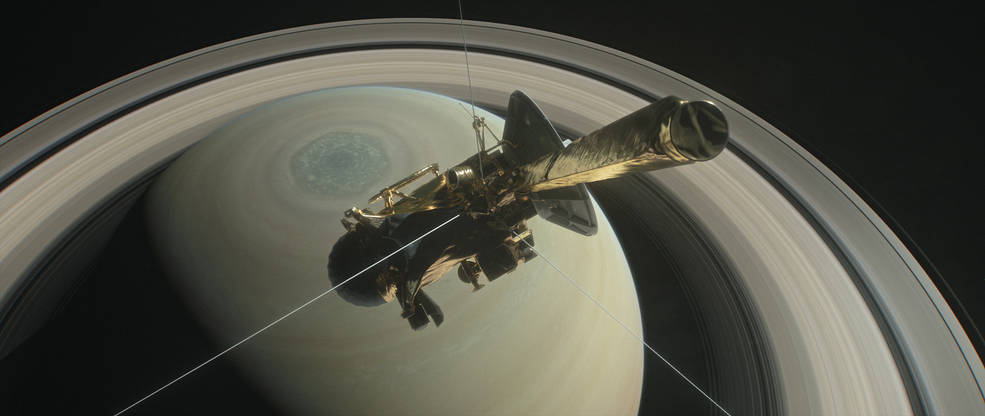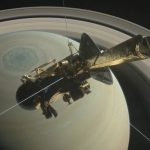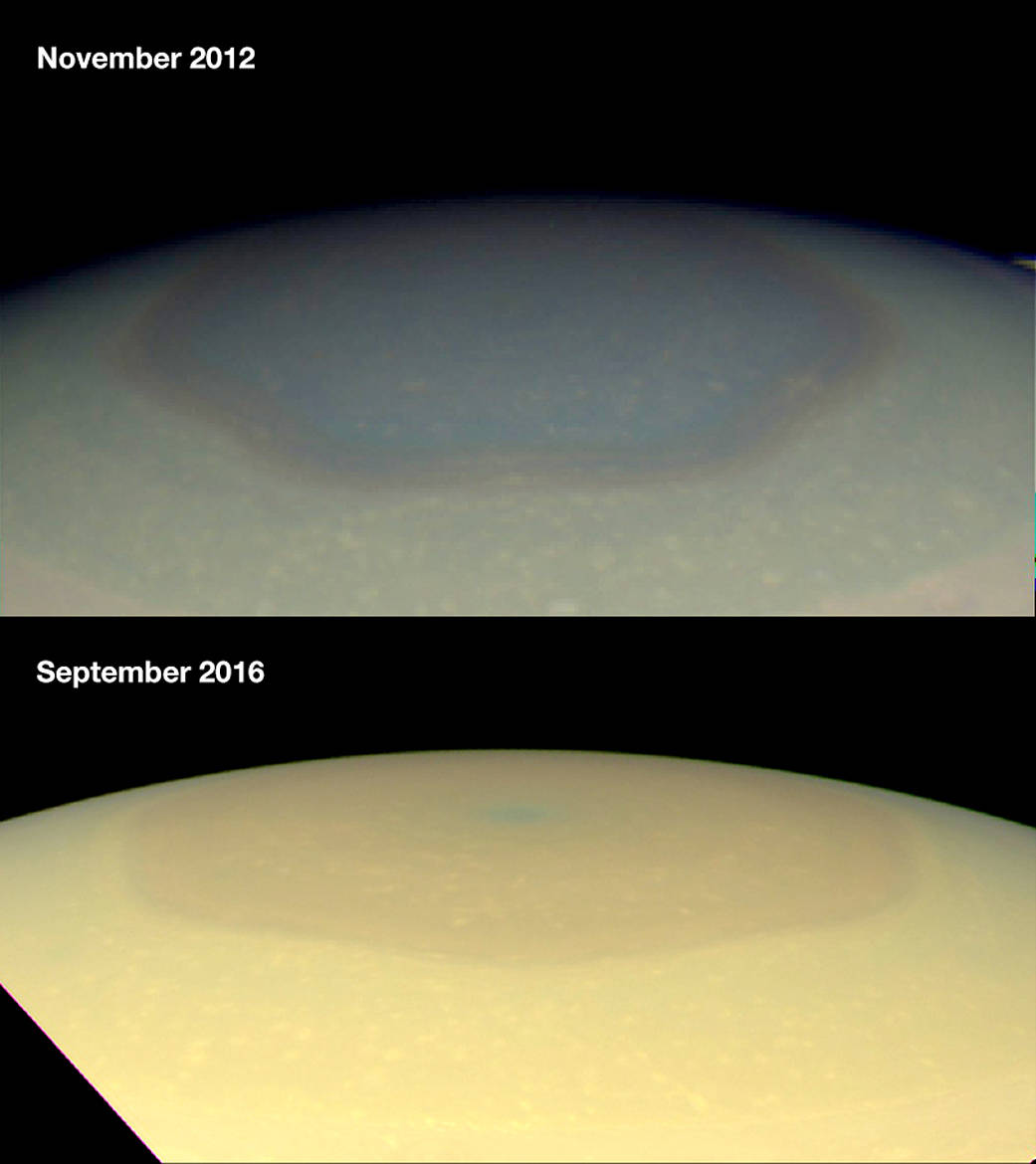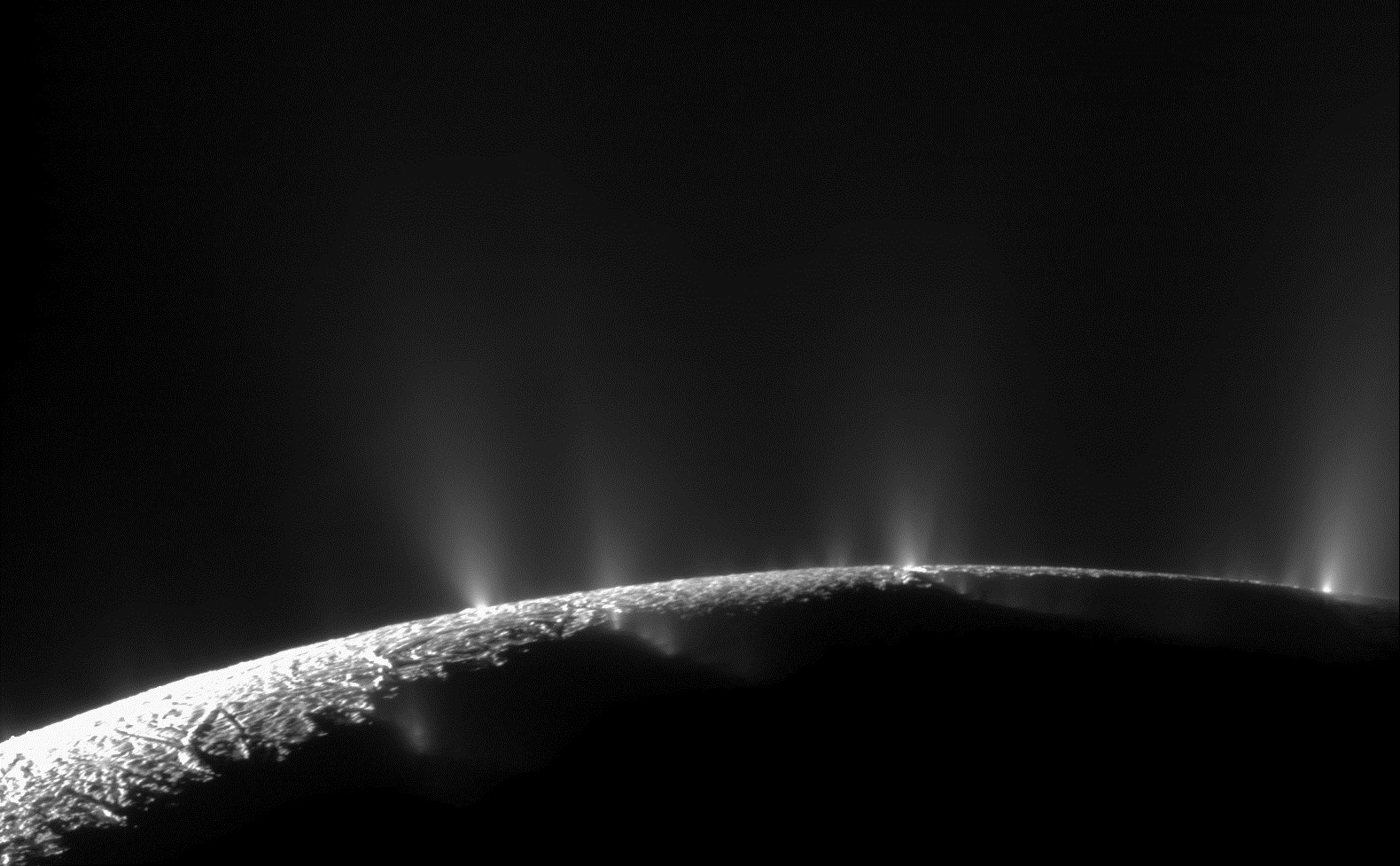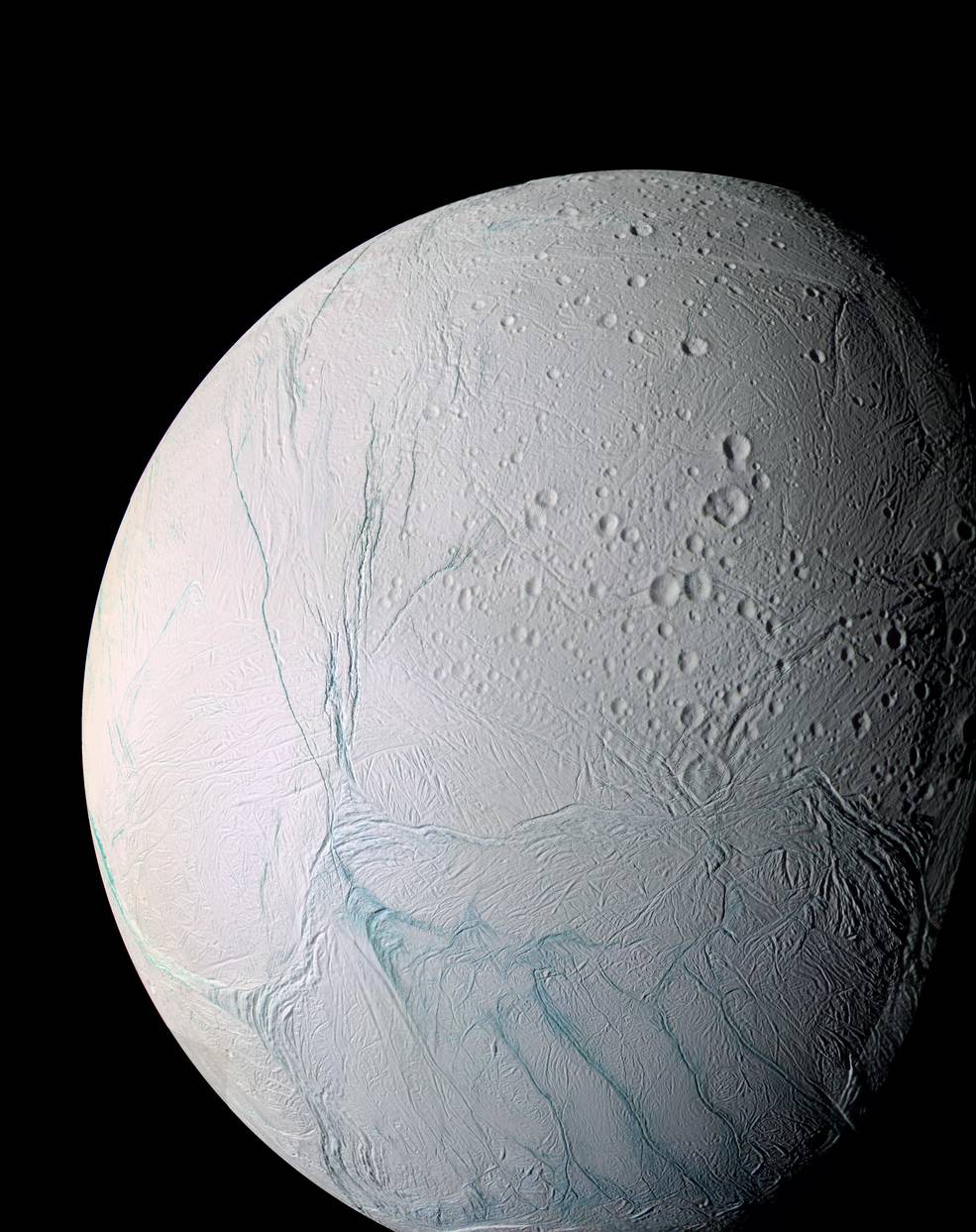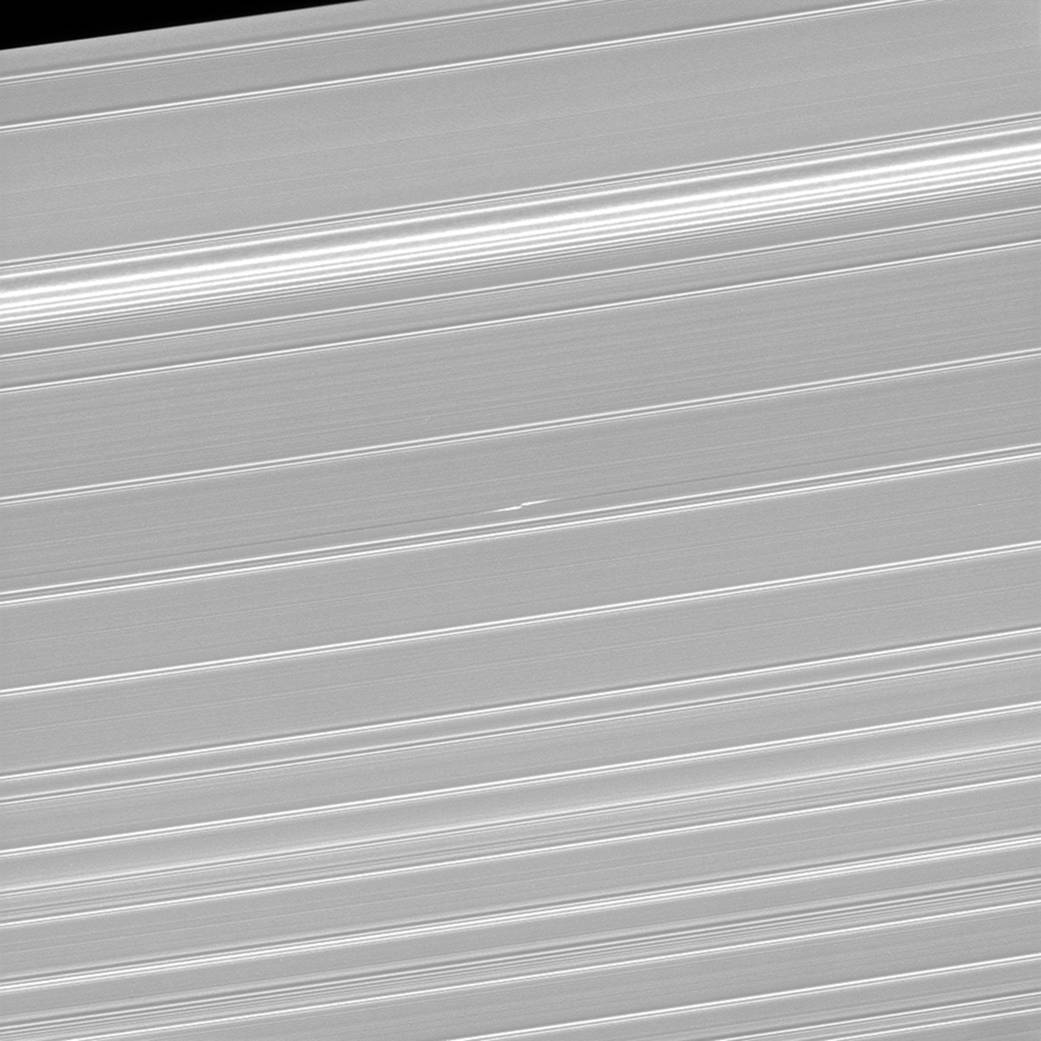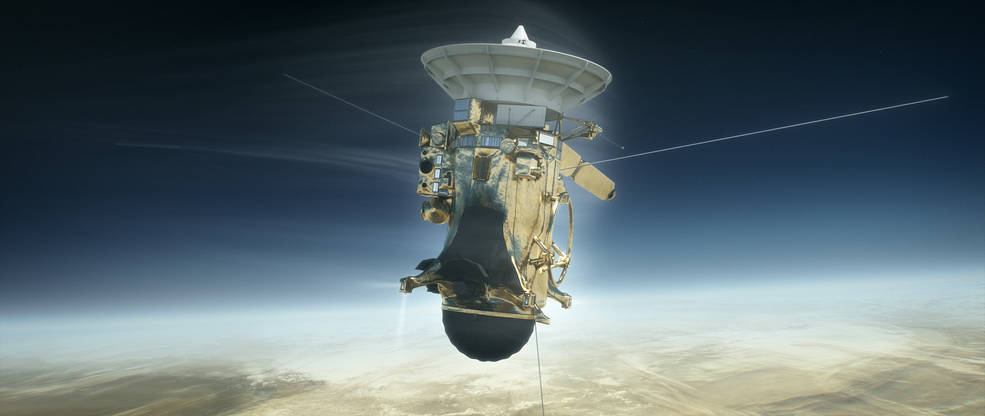オリジナル記事:New Movie Shows Cassini’s First Dive over Saturn
As NASA’s Cassini spacecraft made its first-ever dive through the gap between Saturn and its rings on April 26, 2017, one of its imaging cameras took a series of rapid-fire images that were used to make this movie sequence. The video begins with a view of the vortex at Saturn’s north pole, then heads past the outer boundary of the planet’s hexagon-shaped jet stream and continues further southward.
Credits: NASA/JPL-Caltech/Space Science Institute/Hampton University
NASAの土星探査機カッシーニは、2017年4月26日に土星と土星の環の間の隙間を始めて通過しました。その際搭載していたイメージングカメラの1台が、この動画を作成するために使用された一連の画像を撮影しています。この動画は、土星の北極の渦の映像から始まり、土星の謎の六角形のジェット気流の外側の境界を越え、さらに南下しています。
A new movie sequence of images from NASA’s Cassini spacecraft shows the view as the spacecraft swooped over Saturn during the first of its Grand Finale dives between the planet and its rings on April 26.
The movie comprises one hour of observations as the spacecraft moved southward over Saturn. It begins with a view of the swirling vortex at the planet’s north pole, then heads past the outer boundary of the hexagon-shaped jet stream and beyond.
“I was surprised to see so many sharp edges along the hexagon’s outer boundary and the eye-wall of the polar vortex,” said Kunio Sayanagi, an associate of the Cassini imaging team based at Hampton University in Virginia, who helped produce the new movie. “Something must be keeping different latitudes from mixing to maintain those edges,” he said.
Toward the end of the movie, the camera frame rotates as the spacecraft reorients to point its large, saucer-shaped antenna in the direction of the spacecraft’s motion. The antenna was used as a protective shield during the crossing of Saturn’s ring plane.
As the movie frames were captured, the Cassini spacecraft’s altitude above the clouds dropped from 45,000 to 4,200 miles (72,400 to 6,700 kilometers). As this occurred, the smallest resolvable features in the atmosphere changed from 5.4 miles (8.7 kilometers) per pixel to 0.5 mile (810 meters) per pixel.
“The images from the first pass were great, but we were conservative with the camera settings. We plan to make updates to our observations for a similar opportunity on June 29 that we think will result in even better views,” said Andrew Ingersoll, a member of the Cassini imaging team based at Caltech in Pasadena, California.
The Cassini-Huygens mission is a cooperative project of NASA, ESA (European Space Agency) and the Italian Space Agency. NASA’s Jet Propulsion Laboratory in Pasadena, California, manages the mission for the agency’s Science Mission Directorate in Washington. JPL is a division of the Caltech in Pasadena. The Cassini imaging operations center is based at Space Science Institute in Boulder, Colorado.
For more information about Cassini, visit:http://www.nasa.gov/cassini http://saturn.jpl.nasa.gov
Updated on May 5, 2017, at 1:35 p.m. PDT to correct the date in paragraph 6.
Preston Dyches
Jet Propulsion Laboratory, Pasadena, Calif.
818-354-7013
preston.dyches@jpl.nasa.gov
Steve Mullins
CICLOPS/Space Science Institute, Boulder, Colo.
720-974-5859
media@ciclops.org
2017-128
Last Updated: May 6, 2017
Editor: Tony Greicius
訳者注:
カッシーニの最後の観測ミッションが始まりました。
未だかつて観測されたことのない土星と土星の環の間の「沈黙の空間」を通過しながら土星の大気の詳細な画像を撮影しています。
土星の北極の謎の六角形の中心にある渦も、これほど接近して撮影されたのは初めてとなります。
各画像は個別に公開されていますが、動画で見ると臨場感が違いますね。

This unprocessed image shows features in Saturn’s atmosphere from closer than ever before. The view was captured by NASA’s Cassini spacecraft during its first Grand Finale dive past the planet on April 26, 2017. Credits: NASA/JPL-Caltech/Space Science Institute

This unprocessed image shows features in Saturn’s atmosphere from closer than ever before. The view was captured by NASA’s Cassini spacecraft during its first Grand Finale dive past the planet on April 26, 2017. Credits: NASA/JPL-Caltech/Space Science Institute

This unprocessed image shows features in Saturn’s atmosphere from closer than ever before. The view was captured by NASA’s Cassini spacecraft during its first Grand Finale dive past the planet on April 26, 2017. Credits: NASA/JPL-Caltech/Space Science Institute
ちなみに、この時のカッシーニの高度は土星の大気上空45,000から4,200マイル(72,400から6,700キロメートル)で、画像の解像度は1ピクセルあたり5.4マイル(8.7キロ)から1ピクセルあたり0.5マイル(810メートル)であるとNASAは伝えています。
